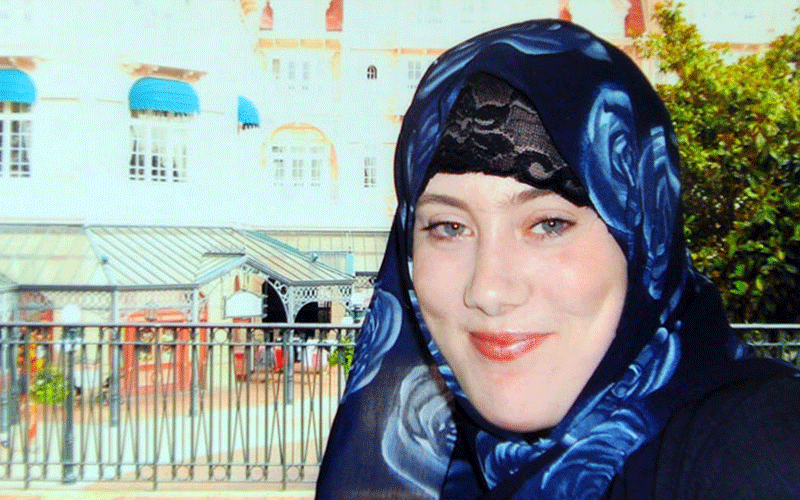Grant no stranger to terror acts, had earlier been convicted
By Sophie Njoka, November 24, 2020The story of Jermaine John Grant, a British national who has been incarcerated for almost a decade, reveals a man with a dark past and penchant for breaking the law.
The 36-year-old Muslim convert, who is being held at the Shimo La Tewa Maximum Security Prison, has, however, been described by prison wardens as an intelligent, down-to-earth, shy person who easily gets agitated by the sound of heavy metal doors in his cell.
“Mzungu, as he is referred to here, is a nice person, his deep accent always makes you want to listen to him.
However, he easily gets angry when his door is slammed,” said a prison warder who requested anonymity because he is not authorised to speak to the media.
Grant, who according to court documents was born and raised in the UK, is an economic immigrant who had depended on himself since childhood before he travelled to Kenya in December 2011.
In his unsworn affidavit, Grant states that upon arrival in the country, he met a suspected terrorist, Faud Abubakar at the Pirates beach.
“Upon my arrival in Mombasa, I went to the beach after about two weeks where I met Abubakar.
I informed him about my marriage and a week or so before the wedding, he offered me a room in his house and that’s how we became friends,” he said.
However, according to police, Grant had arrived in the country from Somalia in 2008.
Chief Inspector Martin Otieno of the Anti-terrorism Police Unit said Grant, while in the company of others who are still at large, had been apprehended at Liboi while dressed in a buibui.
False name
“Grant alongside other suspects had been booked at Dadaab police station, OB/1/31/52008, but they escaped to Mombasa after being rescued by suspected members of Al shabaab,” said Otieno.
Upon his arrival in Mombasa, Grant introduced himself as Ali Mohammed Ibrahim, a false name he began using.
However, his true identity would be revealed after Kenyan authorities got in touch with the United Kingdom High Commission and they were informed that he was a UK citizen.
Following his arrest in the crime-prone area of Kisauni in December 2011, Grant was charged with trying to illegally obtain Kenyan citizenship and was sentenced to nine years in prison in 2015 by High Court Judge Martin Muya, who overturned an earlier acquittal by a magistrate’s court.
“I order that the accused serves one year of imprisonment on each of the nine counts,” the judge said while passing sentence.
“This sentence will run concurrently, which means you will serve a total of nine years imprisonment,” he added.
At the time of his sentencing, Grant was undergoing a trial for separate offences of being in possession of explosives and planning to carry out terror attacks in Mombasa.
He was later sentenced to four years in prison by Mombasa Chief Magistrate Evans Makori in May 2019 for being in possession of bomb making materials.
The magistrate in his judgment noted the case against Grant does not fall under terror-related trials as the Prevention of Terrorism Act was enacted in 2012, a year after the offence was said to have been committed.
Terror attack
Grant was found guilty of possessing explosives, which included acetone, hydrogen peroxide, ammonium nitrate, sulphur sublime container, four AA-size batteries and a conducting wire. The materials were suspected to be intended for use in making explosives for launching a terrorist attack.
In the course of his terror trial, the UK police were requested to provide forensic assistance.
British counter terror officers, who flew in to monitor proceedings and trial had brought with them a large volume of evidence prepared by the counterterrorism team of London’s Metropolitan Police.
The UK government had applied to have Grant serve more time in Kenyan prison in relation to terror crimes, according to detectives who made submissions during his trial.
They described him as a high-risk terror suspect who in 2005 served jail time with Jermaine Lindsay who carried out the 2005 London bomb attacks.
It is claimed that Lindsay may have influenced Grant into joining the Al-Shabaab militant group.
According to correspondence between the Kenyan anti-terror authorities during investigations between the two countries, Grant is said to have developed a relationship with Lindsay, while being held at Feltham Young offenders’ institution over assault charges.
The report indicates British intelligence officials believe Grant was radicalised during that prison term.
During the case in Kenya, The UK had tried to convince the Kenyan authorities of the need to hand Grant “a longer sentence” since he was a security threat.
It is in this same facility where Muktar Said Ibrahim, the suspected leader of the attempted July 21, 2005 attacks on London’s public transport system was incarcerated.
The report further reveals Grant’s connections with the al Qaeda-linked Somali group Al Shabaab.
It is claimed he was dispatched as part of a cell to carry out attacks in Kenya’s port city of Mombasa.
Police allege that he worked with Lindsay’s widow, British national Samantha Lewthwaite aka White Widow, who is also wanted by Kenyan police on terror charges but remains at large after she evaded a police dragnet in 2011.
